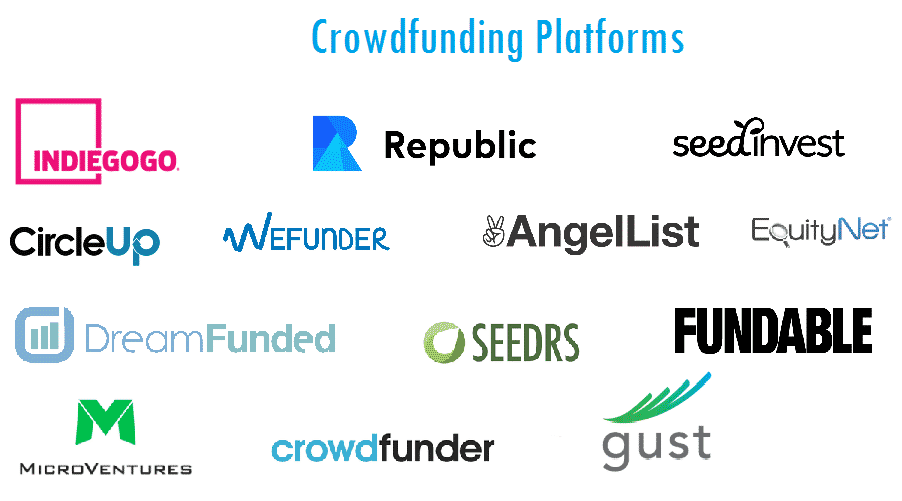Acquiring a business is an exciting venture but can also be a daunting task without the right financial backing. There are numerous financing options available, each with its own benefits and challenges. Understanding these options can pave a smoother path to your business acquisition success.
1. Traditional Bank Loans
Bank loans are one of the most common methods for financing business acquisitions. They offer fixed rates and structured repayment terms, which provide predictability and stability. However, banks require extensive documentation, like your credit history and detailed business plans, to assess risk. Despite the rigorous process, the benefits of a bank loan can outweigh the initial hurdles, especially for established individuals or companies with strong credit profiles.

It’s important to note that traditional bank loans often come with lower interest rates compared to other financing methods, making them an attractive option for many. That said, securing a loan can be time-consuming due to the meticulous evaluation required by banks. Understanding what’s needed upfront can help streamline this process considerably.

2. SBA Loans
The Small Business Administration offers loans with favorable terms and lower down payments, ideal for smaller businesses or first-time buyers. These loans are partially guaranteed by the government, which reduces the lender’s risk and makes them more willing to offer a loan. Consequently, SBA loans can provide a level of support that is typically inaccessible with other financing options. These loans offer longer repayment terms and lesser collateral requirements, making them highly accessible.
3. Leveraged Buyouts
Leveraged buyouts use borrowed funds to acquire a business, with the acquired company’s assets often serving as collateral. This method can provide substantial capital for acquisitions without depleting personal resources. Nonetheless, caution is essential as high levels of debt could emerge from this strategy, potentially impacting the future financial health of the acquired company.
4. Seller Financing
In seller financing, the seller provides a loan to the buyer, allowing for more flexible terms and potentially less stringent approval processes. This method not only demonstrates the seller’s confidence in the business’s ongoing success but also involves direct negotiation with the seller, which can lead to more personalized and advantageous terms for both parties involved.
Moreover, seller financing can create trust and goodwill between buyer and seller. This method allows for immediate purchase with reduced upfront costs, which can be particularly beneficial for transactions involving smaller businesses or family-run operations. However, it’s crucial to have a well-documented agreement to prevent future disputes.
5. Earnouts
An earnout agreement bases part of the purchase price on the future performance of the business, aligning the interests of both buyer and seller. This arrangement can provide security to buyers, as it ties a portion of the purchase cost to achieving specific financial targets. It’s an excellent way to bridge valuation gaps between the parties, thereby facilitating business transfers that might otherwise be financially untenable.
While earnouts offer potential rewards, they inherently come with risks. Disputes may arise if performance metrics are not met or are contested, and these agreements typically require a detailed specification of financial criteria. It’s essential for both parties to engage legal advice and to be clear about expectations from the outset.
6. Asset-Based Lending
This type of financing uses the acquired business’s assets as collateral, often facilitating quicker approvals. Asset-based lending can be an efficient way to access funds using inventory, accounts receivable, or other tangible assets. Opting for this finance route can lead to faster decisions and potentially larger loan amounts, as the tangible nature of the collateral reduces the lender’s risk.
However, businesses must ensure the value of their assets remains robust, as declines can affect credit availability. Asset-based lending can be particularly suitable for those aiming for fast transaction closures or needing flexible revolving credit lines, supporting ongoing operational needs as well as acquisition.
7. Mezzanine Financing
Mezzanine financing is a hybrid of debt and equity financing, providing flexible funding solutions with potential for higher returns. This form of financing is often subordinated to senior debt, acting as a bridge between debt and equity finance, offering lenders rights of conversion into ownership or equity interest.
Despite requiring higher interest rates due to risk exposure, the associated equity components make it an attractive option for firms looking for additional capital without relinquishing complete control. Mezzanine financing can act as a strategic finance option when approaching large-scale acquisitions, helping companies avoid overly leveraging themselves with loans while expanding growth potential.

8. Venture Capital
Venture capital involves investors providing capital to high-potential businesses, often in exchange for partial ownership. This option provides not only financial resources but also potential expertise, strategic connections, and mentorship from seasoned industry players. It’s ideally suited for startups or innovations that promise exponential growth but might struggle with traditional financing.
The drawback of venture capital is relinquishing some degree of control in exchange for capital, as investors typically expect a say in company decisions to ensure growth momentum and return on investment. Thus, one must weigh the benefits of acquired expertise and resources against resultant partial ownership.

9. Angel Investors
Angel investors are individual backers who invest in startups and small businesses, offering both capital and mentorship. These investors often operate in early stages of the business lifecycle, providing crucial funding where institutional investors might hesitate. An angel investor’s involvement can help open doors to essential contacts and further rounds of funding.
As with venture capital, engaging with angel investors involves giving up equity. As such, ensure that values and visions align to ensure a productive and harmonious relationship. Angel investors present a more personal and dedicated financing option, facilitating growth while balancing financial interests.

10. Crowdfunding Platforms
Utilizing crowdfunding platforms can raise funds from a large pool of small investors, engaging your future customer base. It offers a modern, community-driven approach to financing that can be highly effective for businesses with strong consumer engagement and appeal. Crowdfunding not only provides raised capital but also establishes early marketing channels and consumer feedback loops.
However, crowdfunding demands compelling campaign presentations and continuous engagement, with the potential downsides including the public exposure of business ideas. Yet, for entrepreneurs adept in digital marketing and storytelling, it provides a vibrant funding avenue conducive to community building and innovative financing strategies.
11. Private Equity
Private equity firms provide investment capital, often bringing expertise and resources to the acquired business. These firms commit large sums for ownership stakes and actively participate in strategic decision-making. Beyond financial aid, partnering with such firms brings market insights, improvement in operational strategies, and access to a more expansive network.
Nevertheless, the requirement of yielding substantial equity often leads to reduced control over business decisions. Consequently, potential gains should be weighed against this compromise. Collaborations with private equity firms are best suited for larger scale acquisitions demanding significant capital injection and strategic growth plans.
12. Bootstrapping Techniques
Bootstrapping involves funding the acquisition with your own cash or resources, leading to complete ownership and control. By investing personal assets, entrepreneurs maintain full decision-making authority, fostering an environment where risks align directly with rewards.
However, this method can limit the acquisition scale due to restricted financial resources. Entrepreneurs should consider whether their current reserves support not only acquisition but also initial operations. Bootstrapping embodies entrepreneurial liberty at its finest, motivating strategic budgeting and innovative resource allocation.
13. Equity Partnerships
Partnering with other investors provides shared financial responsibility and resources for the acquisition. Equity partnerships can enhance opportunity access and divide financial risks across shared responsibilities, thereby potentially achieving goals unattainable alone.
However, successful partnership demands aligned visions and well-documented agreements to prevent conflict and ensure synergy. For entrepreneurs with limited capital but strong industry know-how, crafting agreements can yield effective collaborative efforts, combining skills and resources targeting acquisition success.
14. Revenue-based Financing
This option involves repayments based on future revenue, aligning the interests of lenders and business owners. Flexibility in repayment correlates with business performance, allowing business owners to continue operations without being overburdened by fixed debts.
Moreover, revenue-based financing is less restrictive, often disregarding traditional metrics such as personal credit. For businesses with solid revenue streams looking for operational breathing room, this approach allows flexibility, albeit potentially higher costs due to inherent investor risks.
15. Family and Friends
Borrowing from family and friends can offer more lenient terms but must be handled with professional agreements to avoid misunderstandings. This route provides personal support, featuring flexible terms often based on trust and mutual understanding.
Yet this financial avenue carries potential emotional complexities should business outcomes not meet expectations. Maintaining transparency and professionalism in transactions preserves relationships while aligning business motivations with personal connections.
Financing Your Business Acquisition: Choose the Right Path and Take Action
Acquiring a business doesn’t have to be limited by your current financial resources. From traditional bank loans and SBA loans to seller financing, crowdfunding, private equity, and revenue-based financing, there are countless ways to fund your dream of business ownership. The key lies in understanding your options, aligning them with your goals, and creating a clear acquisition strategy.
Ready to take the next step?
- Download our free Business Acquisition Toolkit for templates and funding strategies: https://ejbowen.com/resources/business-acquisition-guide/
- Join our private buyer community for tips, deal flow, and direct mentorship: https://ejbowen.com/community/
- Get the Business Acquisition Course at https://ejbowen.com/course/ and learn how to structure deals, negotiate seller financing, and buy a cash-flowing business in 90 days or less.
Don’t wait for the “perfect time.” Start exploring these financing options today and move one step closer to owning a business that changes your future.











